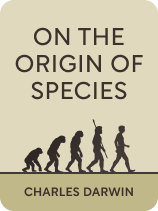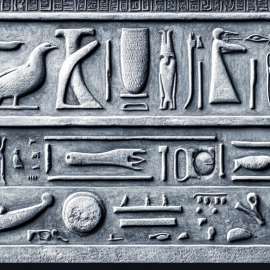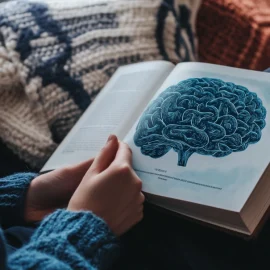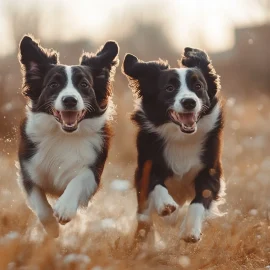

This article is an excerpt from the Shortform book guide to "On the Origin of Species" by Charles Darwin. Shortform has the world's best summaries and analyses of books you should be reading.
Like this article? Sign up for a free trial here.
Why did Charles Darwin believe all organisms share a family tree? How does natural selection work? What criticism did Darwin’s ideas receive during his lifetime?
On the Origin of Species by Means of Natural Selection revolutionized the way people look at life on Earth. In the book, Charles Darwin explains his theory of evolution and the genealogy of species as he understood it. He also responds to a few contemporary arguments against his ideas.
Continue reading for an overview of this groundbreaking book.
Overview of On the Origin of Species by Means of Natural Selection
On the Origin of Species by Means of Natural Selection was originally published in 1859 by the naturalist Charles Darwin and went through six editions in Darwin’s lifetime as he continually revised and clarified his ideas. The work explains and argues for a theory of evolution—that organisms weren’t created separately in their current forms but that each species evolved gradually from other species over the course of millions of years. This theory argues that biology is constantly in flux and that all organisms are related through a deep genealogy of species.
Darwin developed his theory through years of cataloging plants and animals. He also drew insights from his voyage to the Galapagos Islands aboard the HMS Beagle and from his experience breeding pigeons. Darwin’s theories were controversial at the time, as they contradicted traditional Christian teachings. Prior to his work, most people believed that organisms had been created independently and were incapable of changing over time. Since then, however, his ideas have gained widespread acceptance. Darwin’s discoveries not only transformed the field of biology but other scientific disciplines including psychology, ecology, and medicine.
We’ll cover Darwin’s ideas in three parts.
- Part 1: The Theory of Evolution explains the natural processes behind evolution and how they’ve shaped the organisms we see today.
- Part 2: The Genealogy of Species explores the natural history of species and the evidence that modern organisms are all related through a family tree.
- Part 3: Arguments Over the Theory of Evolution discusses the objections raised to Darwin’s theories and how he responded to them in On the Origin of Species.
Part 1: The Theory of Evolution
Darwin explains that species gradually develop through a natural process called evolution. In this section, we’ll first explore the mechanisms behind that process. Then we’ll take a closer look at how this process shapes the natural world.
The Mechanisms of Evolution
Darwin explains evolution as a process with four key mechanisms: variation within a species, heritability of variations, natural selection, and gradual accumulation.
1) Variation Within Species
Organisms in every species vary slightly. Darwin observes that, when examined closely, no two creatures are identical. Their body parts all have slightly different shapes, sizes, textures, and colors. Even vital organs like hearts, kidneys, and spinal cords vary slightly in size and shape from creature to creature. Among humans, for example, you’ll find minor differences in height, bone structure, fingernail density, tongue flexibility, thumb shape, and so on.
2) Heritability of Variations
Furthermore, Darwin explains that these variations are heritable: They can pass from parent to child through reproduction. For example, if your parents have red hair, you’re more likely to have red hair as well. This means that the variations in a given species were likely passed down from parents who also had these variations.
3) Natural Selection
However, not all variations stand an equal chance of being passed along to the next generation. Darwin asserts that any heritable variation that provides one member of a species with an advantage in survival and reproduction over another, no matter how slight, will gradually allow members with that variation to survive and reproduce more than those without it. Over successive generations, natural selection will favor the most useful variations while eliminating the least useful.
Darwin explains that natural selection happens constantly because many organisms in nature aren’t able to reproduce and survive. Problems such as scarcity of food, competition between species, predators, and disease all limit the number of organisms in a species that will successfully pass on their heritable variations. This pressure ensures that variations that enable survival and reproduction are strongly selected for, while those that don’t confer an advantage are selected against.
4) Gradual Accumulation
Finally, Darwin argues that this slow accumulation of useful variations changes a species over time. As some traits are selected for and others selected against, the species gradually shifts as more of the population inherits the most useful traits.
How Evolution Shapes Organisms
Darwin argues that this process has shaped the natural world around us. In this section, we’ll explore how evolution shapes organisms by adapting them to their environments and ecosystems. Finally, we’ll discuss how evolutionary pressures shape adaptive traits.
1) Organisms Adapt to Their Environments
Darwin explains that the process of evolution synchronizes creatures with their environments. While evolution selects for useful traits and against detrimental ones, traits are only useful or detrimental in the context of a particular environment. Along with physical traits, organisms adapt behaviors that allow them to survive in a particular environment.
2) Organisms Adapt to Their Ecosystems
In addition to adapting to their physical environment, organisms adapt to the presence of other organisms. Darwin explains that because organisms have evolved alongside each other, they have developed a deep interdependence.
3) Evolutionary Pressures Shape Adaptive Traits
Darwin also argues that evolution produces similar features in unrelated organisms—what biologists call convergent evolution. Features that are essential for survival or locomotion in a particular environment often take similar shapes.
However, characteristics that aren’t constrained by the environment—like those shaped purely through mate selection—tend to vary. Biologists call this divergent evolution.
Part 2: The Genealogy of Species
Darwin’s theory of evolution maintains that all of our current species descended from older, less developed species. If organisms are shaped by the slow accumulation of adaptive traits passed on through reproduction, it follows that each organism has a history of evolving through different forms. Furthermore, the offspring of a particular species could evolve in different directions, into separate reproductive populations. This would indicate that modern species are in fact distant relatives of each other, descended from common ancestors.
In this section, we’ll first explore Darwin’s arguments that species have descended from earlier species. Then, we’ll discuss his evidence that modern species are related through shared ancestry.
The Descent of Species
Darwin advances four kinds of evidence that species have descended from earlier species: changes in domesticated species, leftover characteristics, intermediate species found in the fossil record, and the role of natural barriers.
Evidence Type 1) Changes in Domesticated Species
To support his argument that species change over time, Darwin highlights the ways humans have changed domesticated plants and animals through selective breeding. He observes that many domesticated organisms have become highly specialized to provide more value to humans. Based on this evidence, Darwin concludes that trait selection has the power to gradually change the characteristics of a species.
Evidence Type 2) Leftover Characteristics
Darwin explains that organisms have taken on multiple forms over the course of their evolution. He argues that we can find evidence for this by looking at structures that have been modified from earlier forms. He identifies two types: vestigial characteristics and repurposed characteristics. Vestigial characteristics are features that served a purpose in earlier versions of a species but are slowly disappearing due to disuse. These characteristics suggest that their ancestors once used these features. Darwin argues that these characteristics wouldn’t exist unless species had evolved from older species.
Repurposed characteristics are features that evolved to serve one purpose and then became adapted to a second. The fact that some body parts have taken on secondary purposes suggests that they evolved to fulfill one need and were then adapted for another, supporting the view that organisms developed in stages.
Evidence Type 3) Intermediate Species in the Fossil Record
Darwin asserts that the fossil record provides examples of transitional species. These ancient ancestors provide links that show one species transitioning into another.
Evidence Type 4) The Role of Natural Barriers
Darwin also argues for the descent of species by highlighting the role of natural barriers in shaping populations and ecosystems. He points out that species look very different from each other on opposite sides of natural barriers like oceans and mountain ranges. Darwin explains that this occurs because natural barriers isolate breeding populations from each other: Organisms that live on either side of a natural barrier evolve to become distinct from each other because they no longer interbreed.
The Relatedness of Modern Species
Darwin’s theory of evolution maintains that organisms are related to each other through a family tree of descent. This happens because one highly successful ancestor species is capable of seeding multiple descendant species.
The individuals in every species carry inherited traits from their ancestors (heritable variations). That means a single population may have multiple traits that are useful for particular purposes. These traits can accumulate in distinct groups within the species. Over enough time, the groups become distinct from each other, turning into two different species.
Darwin argues that all species today have ancient ancestors in common. He draws on two major types of evidence: similarity of traits and hybridization.
Evidence Type 1) Similarity of Traits Between Related Organisms
Darwin argues that shared traits between organisms reveal their relatedness. Some of the most striking similarities between organisms reveal themselves through embryos (when the organism is in its earliest stages of prenatal development).
Evidence Type 2) The Breeding Characteristics of Hybrids
The breeding characteristics of hybrids reveal relatedness between certain species. Darwin explains that breeders of plants and animals have found that individuals from similar species can sometimes reproduce with each other but with mixed results. Some hybrids only rarely produce offspring, some produce infertile offspring, while still others can sometimes produce fertile offspring and yield new hybrid varieties.
Darwin argues that the range of outcomes refutes the idea of sharp delineations between species. Organisms that can produce hybrid offspring together are distant relatives whose reproductive systems are gradually evolving to become incompatible with each other. This further supports the view that these organisms all had ancestors with a common reproductive system.
Part 3: Arguments Over the Theory of Evolution
Darwin’s theory of evolution was controversial in its time, even among scientists. In the final edition of On the Origin of Species, released in 1872, Darwin responds to the three main objections raised by skeptics of his theory of evolution. Here, we’ll review these objections and Darwin’s rebuttals in defense of his theory.
Objection #1: “Lower” Organisms Continue to Exist
Darwin cites critics who argue that the continued existence of simple creatures challenges the claim that sophisticated organisms evolved from simpler ones. If some simple organisms evolved into more complex ones, why didn’t all of them evolve that way? Darwin provides two explanations.
Rebuttal 1) Natural Selection Doesn’t Always Favor Complexity
First, Darwin argues that natural selection isn’t biased in favor of sophistication. Instead, species accumulate adaptations that allow them to continue reproducing. Therefore, a “simple” organism may still be well suited to its environment.
Rebuttal 2) Evolution Is a Work in Progress
Second, Darwin reminds critics that evolution is never completed and every moment in natural history is a snapshot of a work in progress. In the future, organisms may evolve to become even more sophisticated.
Objection #2: Complex Features Are Difficult to Create Through Small Increments
Darwin explains that some naturalists found it difficult to believe that very sophisticated structures could arise through small increments. Organisms today have such highly developed structures and behaviors that it’s hard to imagine a rudimentary version of them providing much value.
Darwin provides two rebuttals to this argument.
Rebuttal 1) Evolution Repurposes Older Structures
Darwin argues that highly sophisticated structures and instincts can evolve incrementally, but they’re often repurposed from earlier structures. An earlier version of a species may evolve a structure for one purpose. Then, the organism finds a new use that allows the structure to continue evolving into greater complexity and sophistication.
Rebuttal 2) The Natural World Shows Incremental Development of Complex Structures
Furthermore, Darwin argues that when we look at simpler organisms, we often find earlier versions of rudimentary structures that developed into much more complex structures over time.
One of the simplest nerve cell structures belongs to jellyfish, whose nerve cells connect in a “net” that senses and processes information. One step up from this we find hydras, small freshwater relatives of sea anemones. These creatures also have a nerve net, but their nerve cells are more specialized, giving them something closer to a brain. Finally, in flatworms, these specialized nerve cells cluster together, forming a simple brain that can make decisions and even remember previous actions. By looking at these simple organisms, we can infer the origins of something as complex as a human brain.
Objection #3: Why Aren’t There More Transitional Species?
Lastly, Darwin’s critics argued that if species evolved from other species, then there should be more transitional species alive, or at least more evidence of them in the geological record. Darwin provides three rebuttals.
Rebuttal 1) Competition Destroys Transitional Species
Darwin argues that we don’t see many transitional species alive today because competition between species would select against them. Recall that scarcity of food, habitat, and other resources puts species in competition with each other. Those that have evolved the best adaptations outcompete those that are less adapted. Therefore, transitional species are likely to die out.
Rebuttal 2) The Fossil Record Is Scarce
Darwin also explains that we don’t find every example of a transitional species in the fossil record because the fossil record is very sparse. Most organisms never become fossils because fossilization is a rare process that requires very specific conditions. Our knowledge of the natural world before our time is very limited. Therefore, Darwin argues, the lack of transitional species in the fossil record poses little challenge to the theory of evolution.
Rebuttal 3) Transitional Adaptations Still Appear in Modern Species
Finally, Darwin argues that even though examples of transitional species may be sparse, we can still infer the course of evolution by studying the incremental adaptations in today’s natural world. Let’s say we want to understand how whales evolved to swim, even though their ancestors walked on land. You could infer this evolutionary path by looking at the behavior of current aquatic and semi-aquatic mammals.
While we may never discover every intermediate species, Darwin argues that the natural world as it currently is furnishes more than enough evidence to support the evolution of one species into another.
Exercise: Reflect on the Theory of Evolution
This exercise will give you a chance to reflect on the theory of evolution and its broader implications for our world.
- Darwin states that all life on earth descended from a single common ancestor. This means that all other organisms—including animals, plants, fungi, and bacteria—are related to you. Does this change the way you understand the natural world and your place in it? Why or why not?
- Darwin explains that natural barriers such as oceans, mountains, and deserts isolate populations and lead to the creation of different species. Now organisms can cross these barriers because humans are moving vehicles and cargo around the globe. How might this impact the course of evolution? Explain your reasoning.
- Imagine that humans continue evolving into the deep future. How do you see us evolving and why?

———End of Preview———
Like what you just read? Read the rest of the world's best book summary and analysis of Charles Darwin's "On the Origin of Species" at Shortform.
Here's what you'll find in our full On the Origin of Species summary:
- Charles Darwin's theory of evolution that changed how we look at life on Earth
- The objections raised against Darwin's theory and Darwin's rebuttals
- Updates on Darwin's theories from contemporary biology






